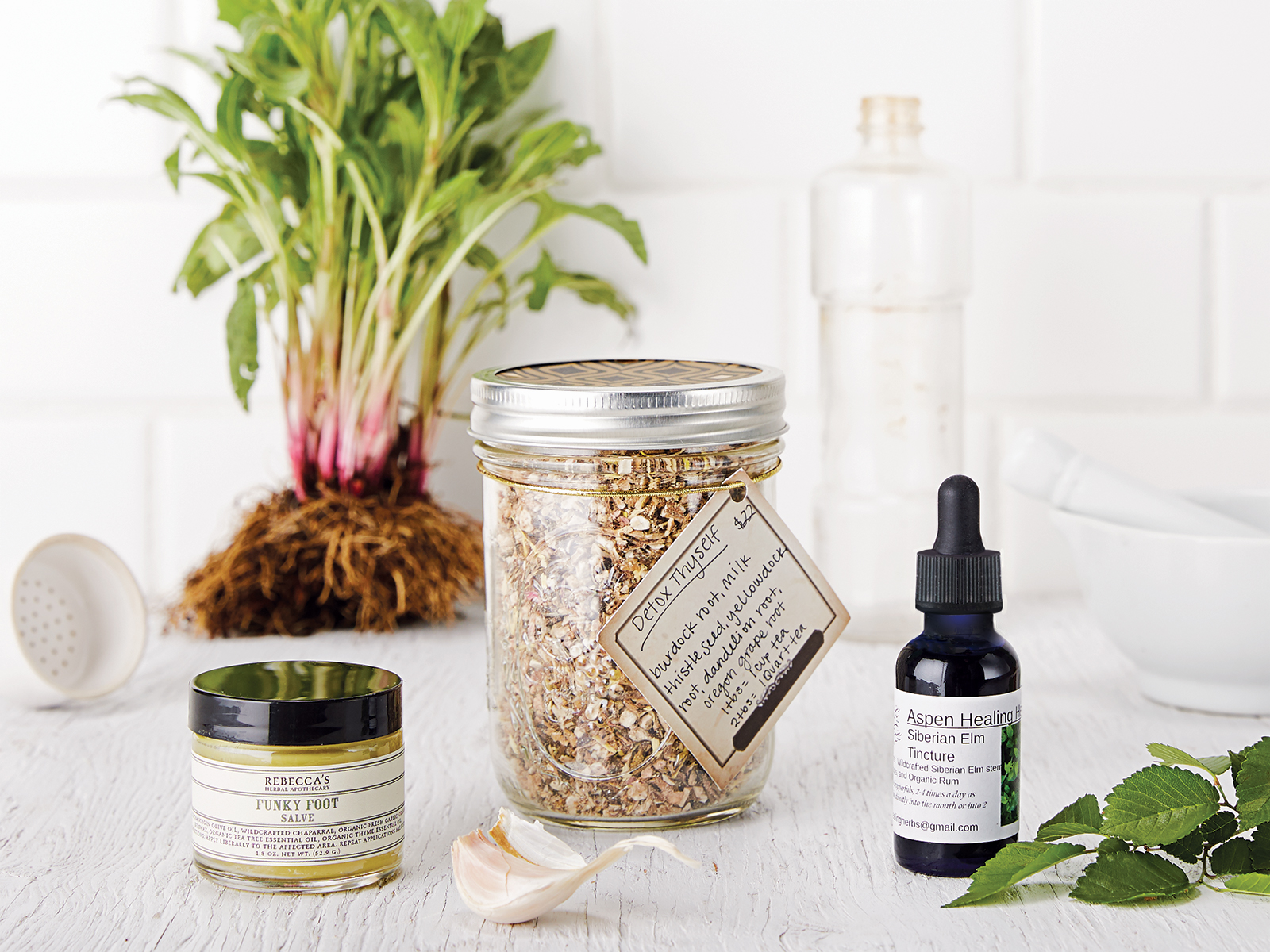The Local newsletter is your free, daily guide to life in Colorado. For locals, by locals.
Long before Alexander Fleming’s petri dish brimmed with mold, humans used plants to treat what ailed them. While nature’s bounty may not be able to vanquish an infection with penicillin’s ruthlessness, our ancestors weren’t totally clueless: Much of the flora available during July, a prime foraging month, contains medicinal properties. Below, three plants found on the Front Range and how to use them—plus some local apothecaries’ offerings for those who don’t want to play pharmacist.
1. Garlic
Find It: Allium sativum can be grown in the garden or purchased at a farmer’s market.
Health Benefits: Some small studies have shown that people taking garlic supplements caught fewer or less severe colds than those ingesting a placebo, and accounts of its antimicrobial and antifungal properties are legion.
DIY: Chop one clove and allow it to rest for about 15 minutes. Mix into one to three tablespoons of honey.
Buy It Instead: Garlic-infused Funky Foot Salve from Rebecca’s Herbal Apothecary & Supply in Boulder contains herbs traditionally used to treat foot molds. $8.50 for a one-fluid-ounce jar
2. Dandelion
Find It: In your lawn, in a meadow, on a mountain; Taraxacum officinale puts down roots everywhere.
Health Benefits: Inulin, a fiber in dandelion roots, has been shown to promote healthy digestion, which might be why Chinese and Native American cultures have used it in medicines. Plus, the greens have vitamin A, an immune system booster.
DIY: Blend the bitter leaves and roots into a smoothie.
Buy It Instead: Anna’s Apothecary in Manitou Springs incorporates dandelion root into its Detox Thyself Tea. The owners say it helps flush toxins from the body. $13 for eight ounces
3. Siberian Elm
Find It: Ulmus pumila is an invasive tree so hardy it can grow in pastures, yards, and between cracks in the road. Health Benefits: Like commonly used slippery elm (which has been overharvested to the point of scarcity), Siberian elm contains a slimy substance called mucilage in its bark that, according to herbalists, eases sore throats.
DIY: The inner bark can be chewed or sucked on.
Buy It Instead: Although you’re more likely to find slippery elm products, you can buy Aspen Healing Herbs’ Siberian elm tincture from Dreamweaver Sisterhood, an Aspen apothecary, on Etsy. $13 for one ounce
200: The hours of class time needed to earn an herbalism certificate from the Denver Botanic Gardens
Pick Carefully
Before you start ripping plants from the earth, Colorado experts have some sage advice.
Study the poisons first. Briana Wiles, owner of Rooted Apothecary in Crested Butte and Gunnison, says many novices don’t learn what not to pick: For example, death camas, which looks a lot like garlic, should be memorized and avoided.
Beware of urban areas. You may not put toxic fertilizers on plants, but your neighbor might. Always use caution, and keep your foraging to wilder areas and your own backyard.
Watch for shifts in the season. Because foliage changes with the weather, “Cattail” Bob Seebeck, who teaches a survival plants course at Red Rocks Community College, instructs his students to recognize all stages of growth.
Respect Mother Nature. Plucking just a few leaves can still impact the environment, says Kat Mackinnon, botany program director at the Colorado School of Clinical Herbalism. Learn the abundant varieties (like the three at left), and gather only what you need.









